Elizabeth Caroline Butler
(1837–1911)
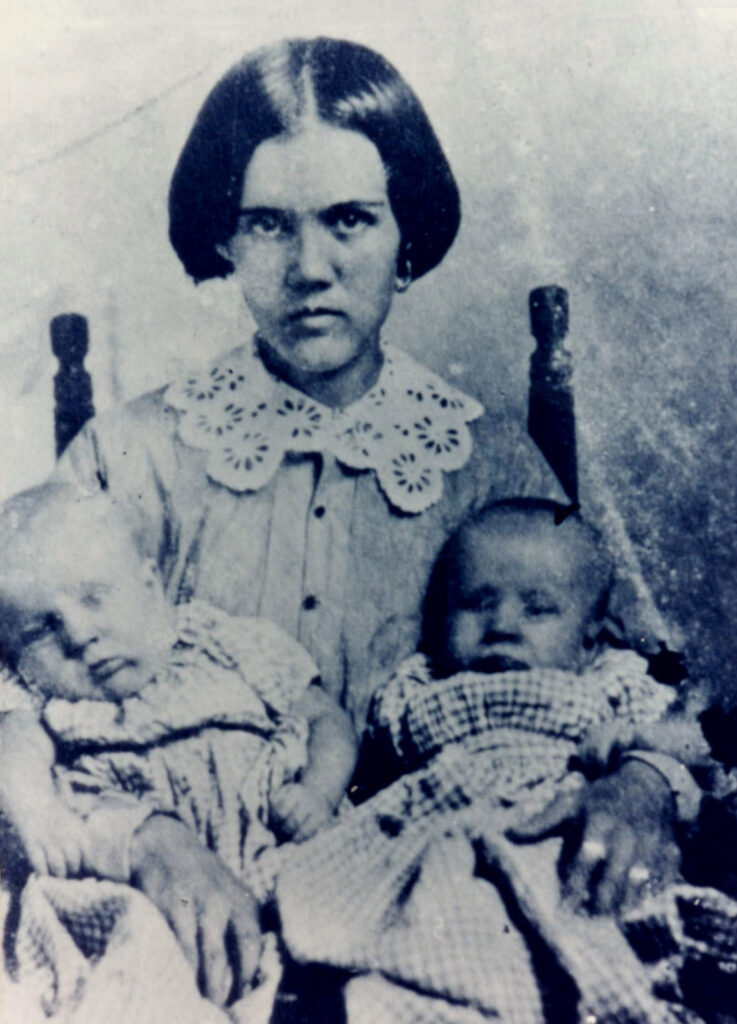
(HistoryNet Archive)
Born in Autaugaville, Ala., on October 7, 1837, Elizabeth Butler had, as a younger lady, traveled west along with her dad and mom, prolonged household, and neighbors. At 18, she married Allan T. Daniel in Lauderdale County, Miss., and the next yr gave beginning to a daughter, Nancy. Whereas pregnant along with her second little one—a son they’d identify Henry—Elizabeth traveled along with her husband to the neighborhood of Eutaw in Limestone County, Texas, the place he started working as a farmer and rancher. In early 1860, she can be blessed with twin boys, George and William.
Having to care for 4 young children and managing the day-to-day struggles on the frontier was demanding sufficient, however Elizabeth was about to expertise much more discord with the premature demise of her husband that April. The demise of a partner on the frontier was a typical prevalence, after all, and Elizabeth did what many such widows did and remarried, this time to dry items service provider and postal employee Isaac Ellison, 9 years her senior.
To defend the Lone Star State’s pursuits through the warfare, Texans enlisted in droves at their county seats. Youthful, single males have been often the primary to go, however Isaac was ultimately amongst these referred to as to responsibility. In his absence, Elizabeth strove to maintain the dry items retailer and submit workplace working, whereas persevering with to juggle being a full-time mother or father.
She had no respite in managing these commitments, and it didn’t assist that cash was troublesome to come back by. Presently, every Texas county issued its personal paper foreign money. Because the warfare progressed, Eutaw alternated inside the jurisdiction of three counties: Limestone, Falls, and Robertson. County cash quickly grew to become extra nugatory than common Texas and Accomplice script, resulting in financial collapse.
Because it did for communities and states throughout the nation, 4 years of warfare decimated Texas’ male inhabitants. Having fought predominantly in Colonel James B. Likens’ Bloody thirty fifth Texas Cavalry, Isaac can be one Lone Star boy lucky sufficient to return dwelling. —William Joseph Bozic
Charles Carleton Coffin
(1823–1896)
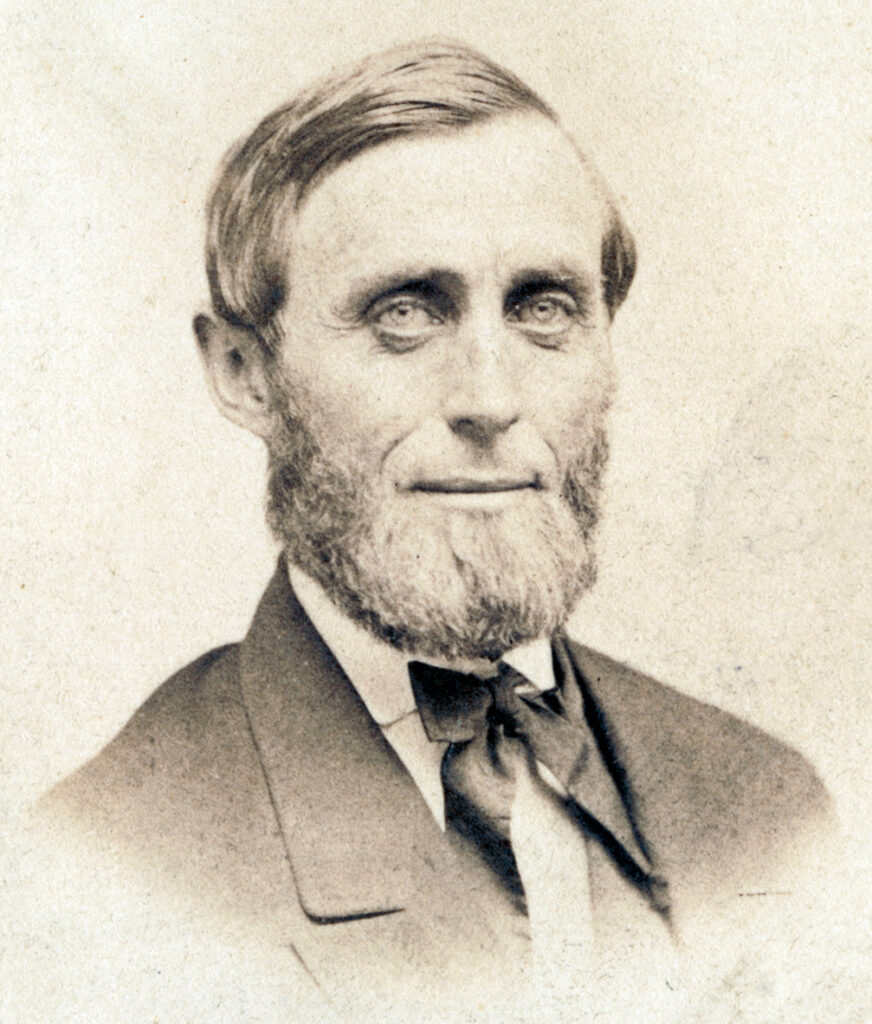
(Digital Commonwealth, Boston Public Library)
Whereas writing for The Boston Journal through the Civil Warfare, Charles Carleton Coffin was instructed by his editor to at all times “maintain the Journal on the entrance.” In that, Coffin succeeded. Based mostly in Washington, D.C., he first made a reputation for himself touring into the sphere with what grew to become the Military of the Potomac. His protection of the Union military’s retreat on the First Battle of Bull Run, the truth is, stays his most extensively quoted piece.
At Fredericksburg in December 1862, a Union soldier expressed amazement at seeing “Carleton” beneath a tree beneath fireplace, nonetheless writing away. The next spring and summer time, Coffin adopted the Union military to Gettysburg and ended up touring 100 miles on horseback and 800 extra by prepare to get accounts to the Journal’s readers.
Throughout the Battle of the Wilderness in Could 1864, Coffin had his nephew hurry his account to the presses in Washington. Trip as quick as you’ll be able to, he urged; simply don’t kill the horse. “If he’s behind, his occupation is gone,” Coffin instructed his fellow warfare reporters (“specials,” as they have been referred to as). The “account should be the primary, or among the many first, or it’s nothing.” If a reporter have been to overlook the mail or the prepare, he noticed, “he may as effectively put his pencil in his pocket and go dwelling.”
Coffin was certainly one of greater than 300 Northern correspondents to cowl the warfare, incomes about $25 per week. He shared along with his colleagues a typical set of vexations, such because the horse-stealing that continuously bedeviled area correspondents. On a number of events, Coffin’s servant greeted him within the morning, “Breakfast is prepared, Mr. Coffin. Your horse is gone once more.”
It’s no shock that Coffin’s identify has a outstanding place amongst Northern reporters inscribed on the Warfare Correspondents Memorial Arch at Maryland’s Gathland State Park close to Burkittsville. —Stephen Davis
Peter Bauduy Garesché
(1822–1868)
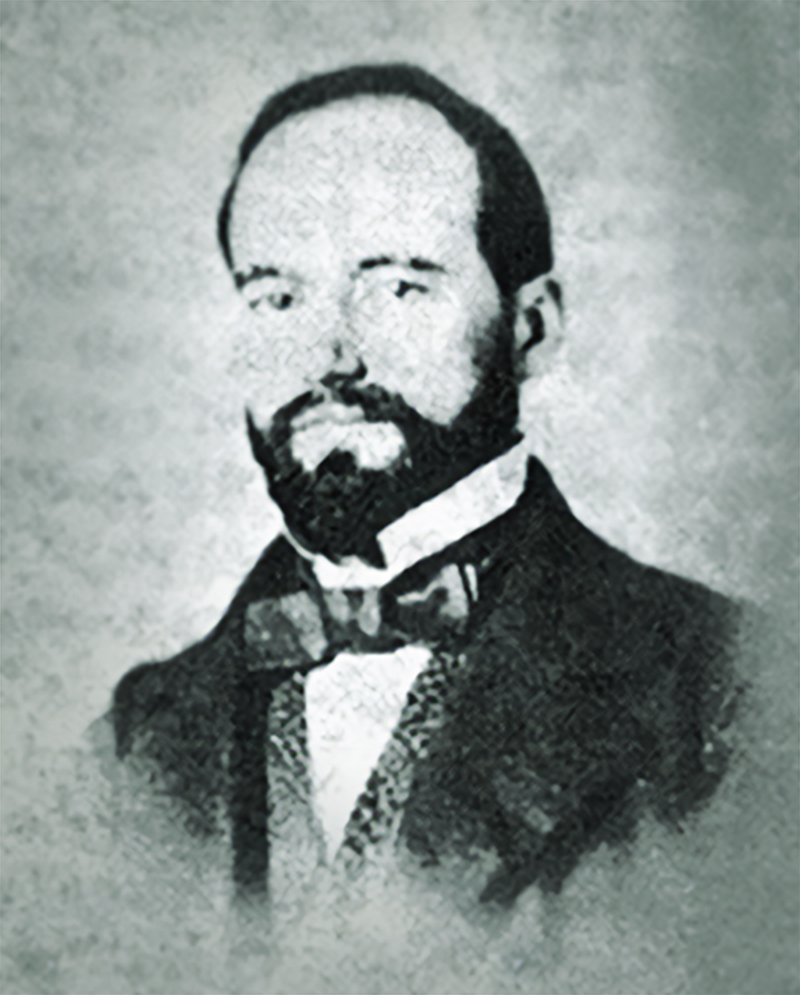
(HistoryNet Archive)
The authors of the 2007 guide By no means for Need of Powder make a compelling case that the Augusta (Ga.) Powder Works and its creator, Colonel George W. Rains, have been instrumental to the Accomplice Military’s survival because the warfare endured. Rains, nonetheless, had a counterpart within the Accomplice Navy who shouldn’t be ignored: Peter Bauduy Garesché.
Garesché’s father and uncle have been French emigres who owned and operated a gunpowder mill in Wilmington, Del. The household have been enterprise companions of and kin by marriage to the DuPonts of Wilmington’s famed DuPont Powder Mill household. Peter labored along with his father within the mills as a teen however ultimately launched into a profession as a lawyer in St. Louis.
The Civil Warfare divided the Garesché household. Peter’s cousin and shut pal Julius Garesché, a fellow classmate at Georgetown College and a West Level graduate, remained loyal to the Union. Though Peter was a Southern sympathizer, he was not a secessionist, in accordance with household sources. However when ordered to take a loyalty oath, he went south.
It helped additionally that he had robust Accomplice contacts—Basic Joseph E. Johnston was his brother-in-law—and when the Accomplice Navy was on the lookout for somebody to run its newly created powder works in Columbia, S.C., Garesché was chosen. It was a prescient choice.
Garesché was applauded for conducting the Columbia Naval Powder Works with “singular talent and commensurate outcomes,” and for supplying the Southern Navy with gunpowder “of wonderful high quality.” Union Lt. Gen. Ulysses S. Grant, who had identified Peter whereas each have been in St. Louis, purportedly instructed a pal: “I’d, if I caught him, maintain him shut and never change him for 10,000 males. The powder he manufactures for the South is so superior to ours.”
After the warfare, Garesché resumed his legislation apply in St. Louis. He died in 1868. —Bruce Allardice
Mom Mary Hyacinth
(1816–1897)
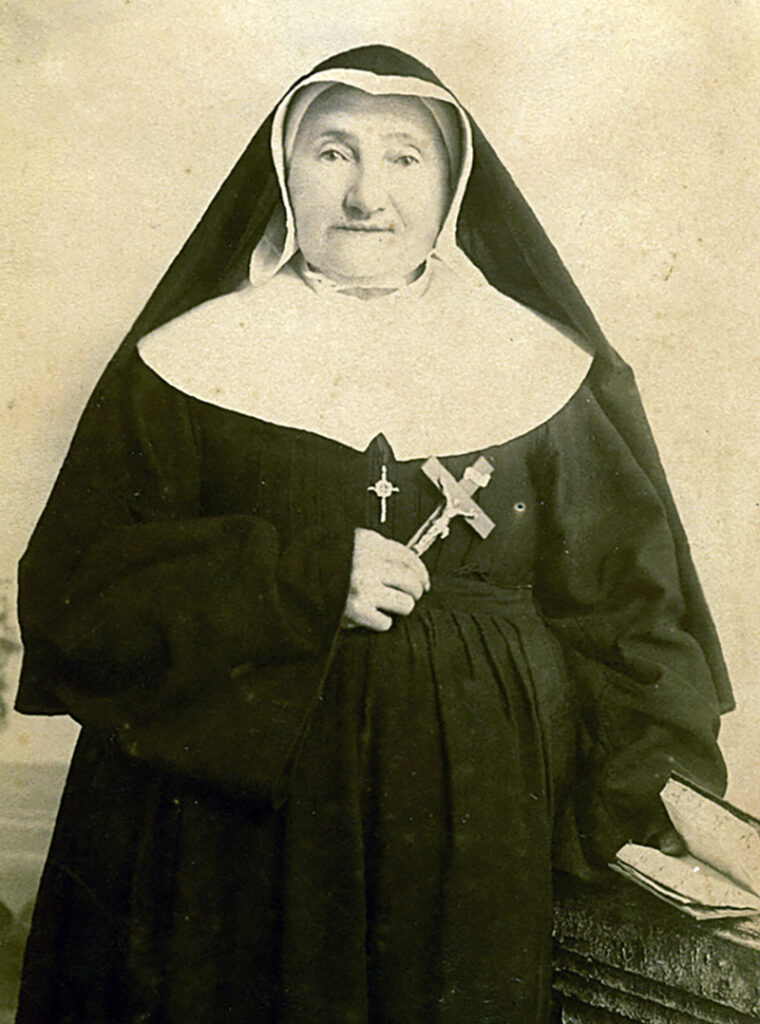
(Archives of the Diocese of Shreveport)
In 1855, 39-year-old Madeline LeConniat, higher referred to as Mom Mary Hyacinth, traveled to central Louisiana from her native France to open a convent and faculty together with 9 different Daughters of the Cross. Louisiana would show a harsh local weather for her, typically leaving her beneath the climate. The mosquitoes, she wrote, “[besiege] me frequently as a result of my blood which nonetheless smells European attracts them.” An absence of conversational English additionally hindered her native relations.
The Civil Warfare elevated already exhausting instances with inflated pricing. Meals and different provides have been briefly provide, inflicting tense circumstances for the nuns, college students, and refugees alike. Troops from each side always handed by the realm, placing calls for on their meager provides.
The worst got here through the Battle of Mansura on Could 16, 1864, a contest that includes an artillery duel through which stray photographs broken the convent’s buildings. As well as, troopers looted the rations of the nuns and their wards. Relentlessly, Mom Hyacinth secured donations from the realm’s residents to maintain issues working easily. She fervently stored the varsity working and nonetheless supplied shelter to displaced people and households.
After the warfare, Mom Hyacinth continued to serve the convent and the neighborhood till 1867 when the motherhood discontinued its help of the Louisiana mission. Two years later, Mom Hyacinth was reelected mom superior and referred to as again to Louisiana. She continued her neighborhood work with out the help of the French motherhouse.
In 1882, at age 65, Mom Hyacinth returned to France to run the American novitiate till her demise in 1897 at age 81. The Daughters of the Cross continued to function colleges all through Louisiana into the following century, capitalizing on the sterling examples set by Mom Mary Hyacinth. —Edward Windsor
Martin Jackson
(Unknown)
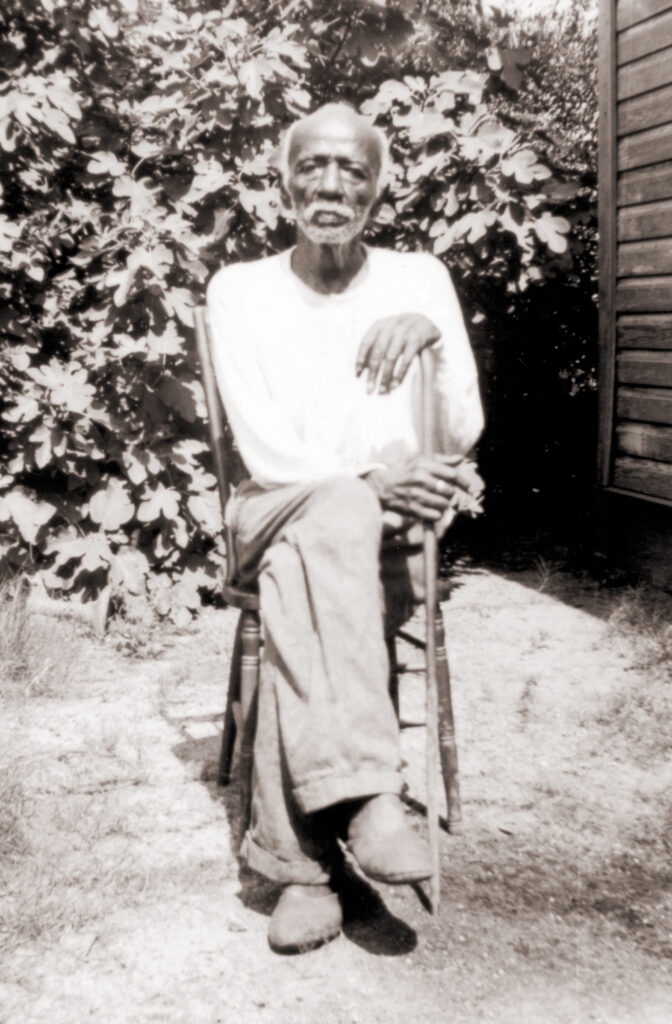
(Library of Congress)
Because the Battle of Nice Hill, La., raged on April 9, 1864, Colonel Augustus Buchel of the first Texas Cavalry dismounted his troops and ordered them to assault the Federal infantry. Remaining on horseback, nonetheless, Buchel was a straightforward goal and shortly fell mortally wounded with seven accidents.
Two days later, Buchel died within the arms of a 17-year-old slave named Martin Jackson, a self-described “black Texan,” who lamented: “I had pitched up a sort of first-aid station. I keep in mind standing there and pondering the South didn’t have an opportunity. Rapidly I heard somebody name. It was a soldier, who was half carrying Col. Buchel in. I [couldn’t] do nothing for the Colonel. He was too far gone. I simply held him snug and that was the place he was in when he stopped respiration. He was a pal of mine.”
Martin and his father had adopted their proprietor, Alva Fitzpatrick, to warfare to function cooks. Martin was additionally a stretcher-bearer, which he known as “an official lugger-in of males that acquired wounded.” Though Martin conceded, “I knew the Yanks have been going to win from the start. I needed them to win and lick us Southerners,” he additionally “hoped they was going to do it with out wiping out my firm.”
He remained fiercely loyal to the lads of the first Texas all through the warfare, persevering with to cook dinner for the lads and have a tendency the wounded. After the warfare, he was freed, grew to become a cowboy, married, and ultimately had 15 kids. He even served as a cook dinner in World Warfare I, proudly claiming he by no means donned a uniform in both battle. Martin’s one remorse through the warfare—he began the lethal 75-year behavior of smoking tobacco. —Fran Cohen
Cyrus Corridor McCormick
(1809–1884)
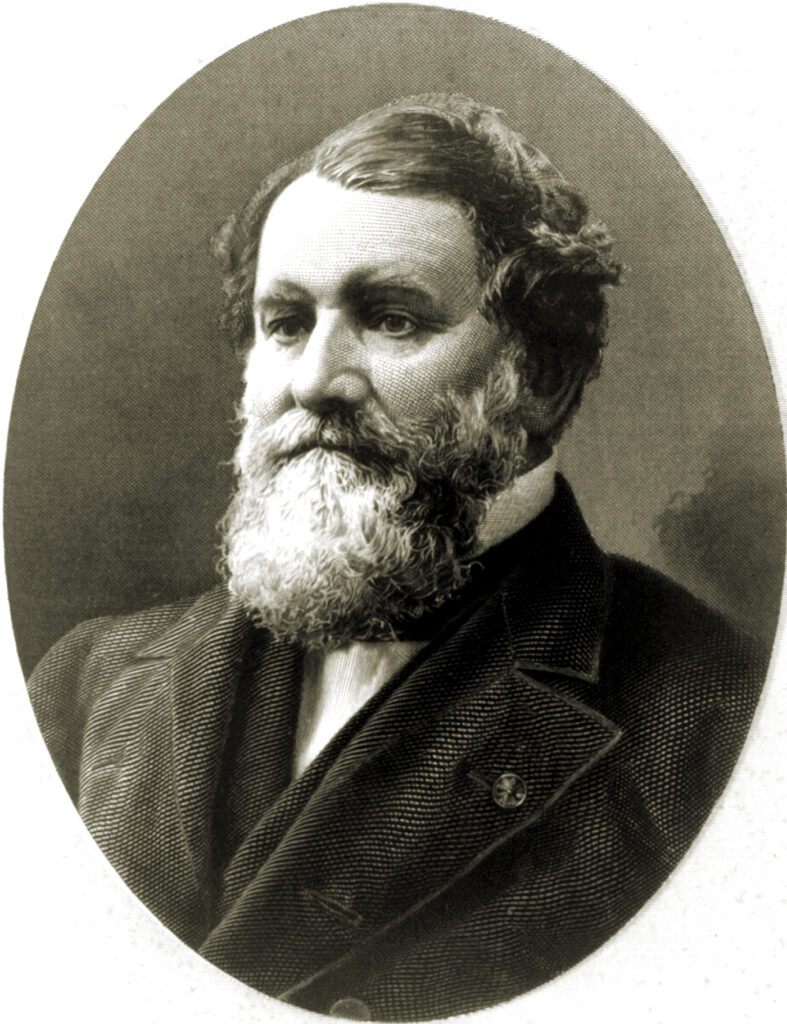
(Science Historical past Photos/Alamy Inventory Photograph)
Cyrus Corridor McCormick, one of many United States’ nice early industrialists, based the McCormick Harvesting Machine Firm in Chicago in 1847. Though he was merely certainly one of a number of entrepreneurs to invent a mechanical reaper, his firm’s Chicago dwelling, in addition to his household’s enterprise acumen, rapidly made his model the nation’s most profitable and extensively used harvester, critically serving to open the Midwest and Nice Plains to household farmers within the decade main as much as the Civil Warfare.
Born February 15, 1809, in Virginia’s Shenandoah Valley, McCormick was the eldest of eight kids raised by Robert McCormick Jr. and Mary Ann Corridor. Robert McCormick had tried to design and construct a mechanical reaper of his personal throughout Cyrus’ youth, nevertheless it proved to not be a sturdy, dependable mannequin. Constructing upon his father’s failures, in addition to an unpatented profitable model by Scottish inventor Patrick Bell, Cyrus succeeded in developing a dependable reaper in 1831. He continued engaged on bettering this mannequin and at last obtained his first patent in 1834.
Two years after Cyrus established the McCormick Harvesting Machine Firm with certainly one of his brothers, Leander, one other brother—William—joined them in Chicago. William’s enterprise perception and Cyrus’ expert salesmanship helped the corporate flourish.
Cyrus, nonetheless, suffered a stroke in 1880 and spent the final 4 years of his life as an invalid earlier than passing away in Chicago on Could 13, 1884. In 1902, the McCormick Harvesting Machine Firm was absorbed into the Worldwide Harvester Firm. —Terry Beckenbaugh
John Different Day
(1819-1869)
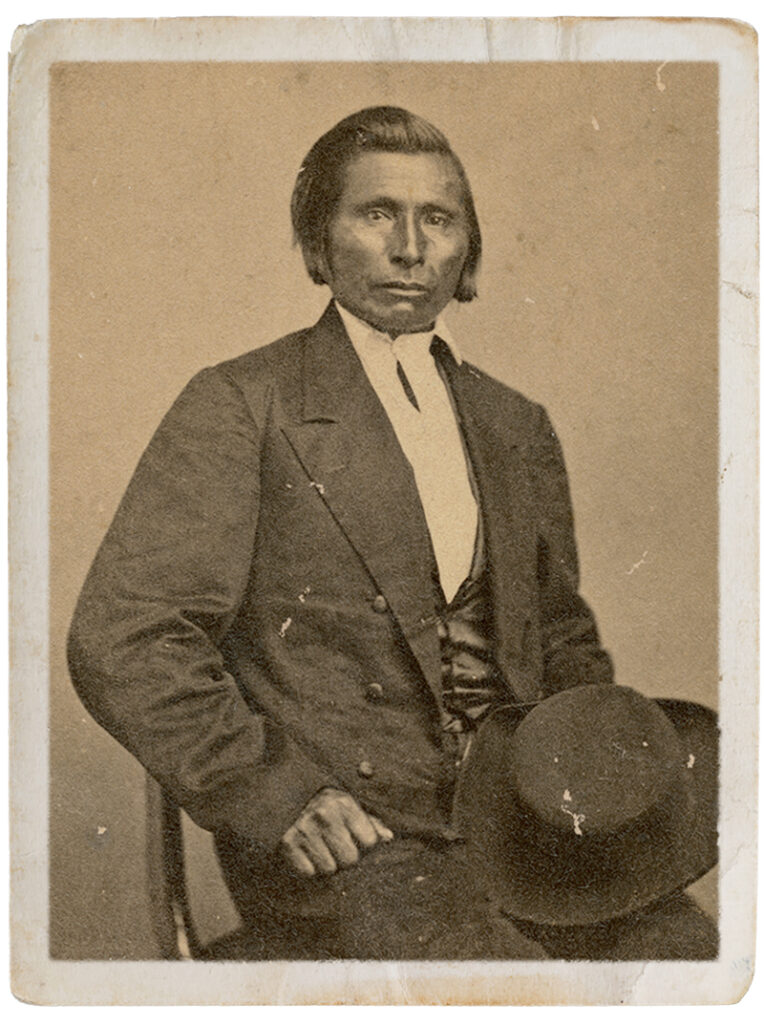
(Minnesota Historic Society)
“Once I gave up the warfare path and commenced working the earth for a dwelling, I discarded all my former habits,” John Different Day as soon as wrote. “It was very exhausting for me to be taught the white man’s methods, however I used to be decided to get my dwelling by cultivating the land and elevating inventory.”
Born Ampatutokacha (i.e., Good Sounding Voice) in 1819, Different Day had been a fierce warrior in his youth, however his conversion to Christianity led him to affix an affiliation of “farmer Indians” in 1856. The next yr, Different Day assisted within the rescue of a younger feminine captive, and in 1859 he was nominated to a treaty delegation despatched to Washington, D.C. Whereas on that journey, he met an English girl working at his resort whom he later wed.
On August 18, 1862, Dakota Indians, upset with dwelling circumstances on their federal reservation in Minnesota, killed a number of settlers and merchants throughout an armed assault on the Decrease Sioux Company, igniting the 39-day Dakota Warfare of 1862. Different Day hurriedly gathered up 62 settlers (males, ladies, and youngsters alike) and secured them in an Company constructing in a single day, personally standing guard on the door. Early the following morning, he guided the group on an arduous, three-day trek throughout the Minnesota River and thru a prairie to security in St. Paul, the place he was welcomed as a hero. Desirous to additional help his new neighborhood, Different Day volunteered as a civilian scout for the U.S. troops assembled to fight the hostile Indians, typically combating facet by facet along with his newfound comrades.
The U.S. authorities awarded Different Day $2,500 for his heroism. He purchased a farm in Henderson, Minn., however later offered it and moved to the Dakota Territory. He would die of tuberculosis on October 19, 1869, on the Fort Wadsworth hospital in what grew to become the state of South Dakota 20 years later. —Richard H. Holloway
Phoebe Levy Pember
(1823–1913)
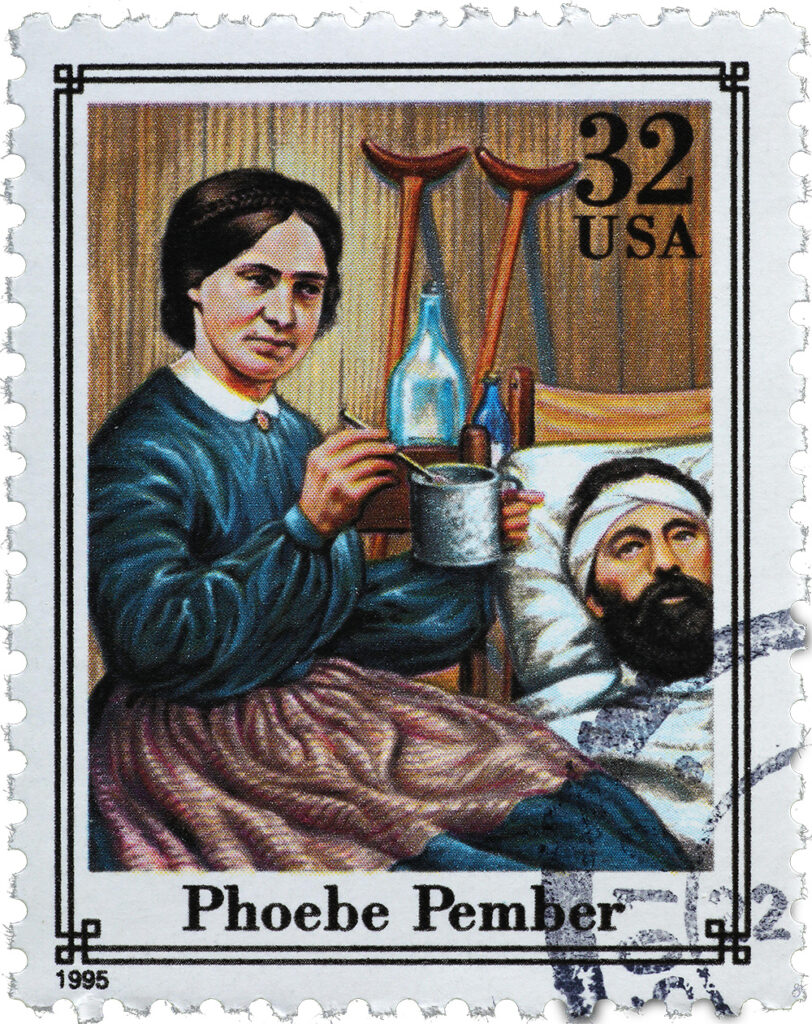
(Peregrine/Alamy Inventory Photograph)
In April 1861, there was no cause to count on Phoebe Levy Pember would depart the mark on the Civil Warfare that she did. Born right into a outstanding Jewish household in Charleston, S.C., she had spent the antebellum years in relative consolation, the well-off spouse of a gentile, Thomas Noyes Pember, whom she married in 1856. Because the nation formally started its break up, nonetheless, her husband contracted tuberculosis, and she or he was widowed three months into the warfare. With no kids and few profession choices, she relented to residing along with her dad and mom in Marietta, Ga. There she struggled, directionless and continuously at odds along with her father.
That modified in November 1862 when Pember obtained a proposal from the spouse of Accomplice Secretary of Warfare George Randolph to maneuver to Richmond to turn out to be “matron” of the capital metropolis’s Chimborazo Hospital. Regardless of no earlier nursing expertise, Pember proved a providential alternative for the place. In line with the “Jewish Ladies’s Archive,” she “oversaw nursing operations in addition to housekeeping and meals and maintained a pleasant however agency authority, liked for her female charms and her dedication to her sufferers.” That didn’t forestall her from pulling a gun on a hospital employee attempting to pilfer whiskey from the hospital’s provides.
Pember remained as Chimborazo’s first appointed feminine administrator till Richmond fell in April 1865. In 1879, she penned the guide A Southern Girl’s Story: Life in Accomplice Richmond, and in 1995 the U.S. Postal Service honored her with a stamp, that includes a portray of Pember feeding certainly one of her sufferers hen soup.
As historian James Robertson Jr. remembered: “Mrs. Pember was an aristocrat who developed a deep affection for the widespread troopers and the category from which they got here. She lived to be 89, however nothing in her life matched the three years of devoted service she gave to the human particles of warfare. Her solely memorial have been the appears to be like of thankfulness that got here from struggling troopers who stretched out a hand for assist—and located Phoebe Pember.” —Gregg Phillipson
Emma Sansom Johnson
(1847–1900)
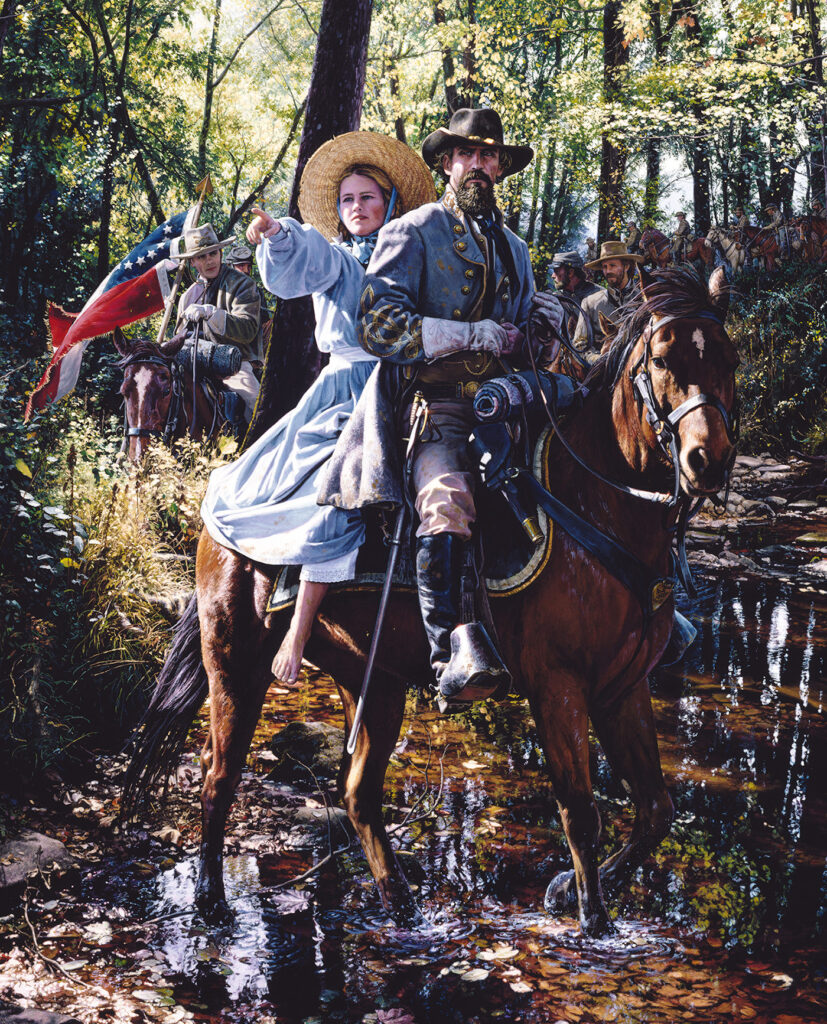
(To the Misplaced Ford by John Paul Pressure)
The Yankees have been a number of miles forward, with Nathan Bedford Forrest in earnest pursuit. A deep stream blocked the way in which, nonetheless. The place may he cross—and who would present the way in which?
It was late April 1863, and a 2,000-man mounted column beneath Colonel Abel Streight had ridden to northwest Alabama to wreck as many Accomplice railroads as doable. On the morning of Could 2, the Federals burned the bridge throughout Black Creek, north of Gadsden, Ala., believing it could stall Forrest lengthy sufficient for them to get away.
The “Wizard of the Saddle” wasn’t stymied, although. An area lady, 16-year-old Emma Sansom, knew of a close-by ford. Forrest eagerly hoisted her onto his saddle as she pointed the way in which. After crossing the creek, the Confederates chased Streight and his troopers so determinedly that he surrendered his command the following day.
Forrest was fast to credit score the lass along with his success, writing her a notice of thanks from his “Hed Quarters in Sadle.” Emma rapidly grew to become an area heroine. She married the following yr, and after the warfare moved to Texas, the place she died in 1900.
Seven years later, Gadsden residents unveiled a statue to her that, regardless of latest discussions of taking it down, stays standing—with Emma’s proper arm held aloft, her index finger pointing after all to that famed Black Creek ford. —John Gordon
Fritz Tegener
(1813–unknown)
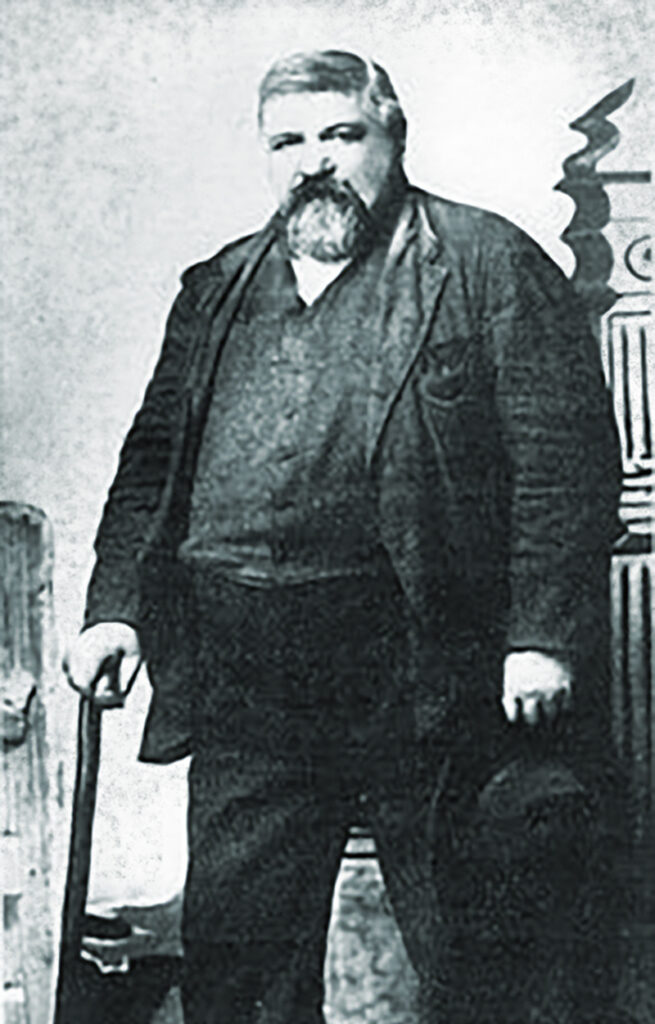
(Texas State Historic Affiliation)
A Prussian immigrant, Fritz Tegener lived within the Texas Hill Nation city of Consolation, a neighborhood began by latest German immigrants embroiled within the political unrest of the Revolutions of 1848 in Europe. Few German Texans owned slaves, and the folks of Consolation have been overtly against secession when the Civil Warfare started, unwilling to take part in one other such battle.
Earlier than the warfare, Tegener had been politically energetic in Consolation, serving as a jurist and county treasurer. That may proceed through the Civil Warfare. To guard the neighborhood from each Indian raids and the Confederacy, Tegener and different residents fashioned what was referred to as the Union Loyal League.
After the Conscription Act of 1862 handed, Accomplice troopers started harassing the German Texans to affix the Military, spurring greater than 60 to prepare a bunch that will journey south to Mexico to keep away from conscription and appointing Tegener their chief. The ensemble departed in the summertime of 1862, pursued by 94 Confederates because it traversed the rugged terrain of southwest Texas.
On August 10, 1862, the Confederates caught the Germans on the banks of the Nueces River and a battle ensued, referred to as the Bloodbath on the Nueces, through which 19 Unionists have been killed and 9, too injured to flee, left behind and captured. Confederates executed their prisoners and left all 28 our bodies unburied.
Although wounded, Tegener escaped and led the remaining Germans to Mexico, solely to be ambushed by one other Accomplice group whereas crossing the Rio Grande. Eight extra died.
Tegener spent the remainder of the warfare in Mexico, however returned dwelling afterward. Later, ladies of Consolation collected the sun-bleached bones from the battlefield and buried them beneath the one German language monument devoted to the Union within the South named Treǔe der Union (Loyalty to the Union). Tegener risked his life to defend his political opinions and discover refuge for younger German males of the Texas Hill Nation. —Charles Grear
Alice Thompson
(1846–1869)
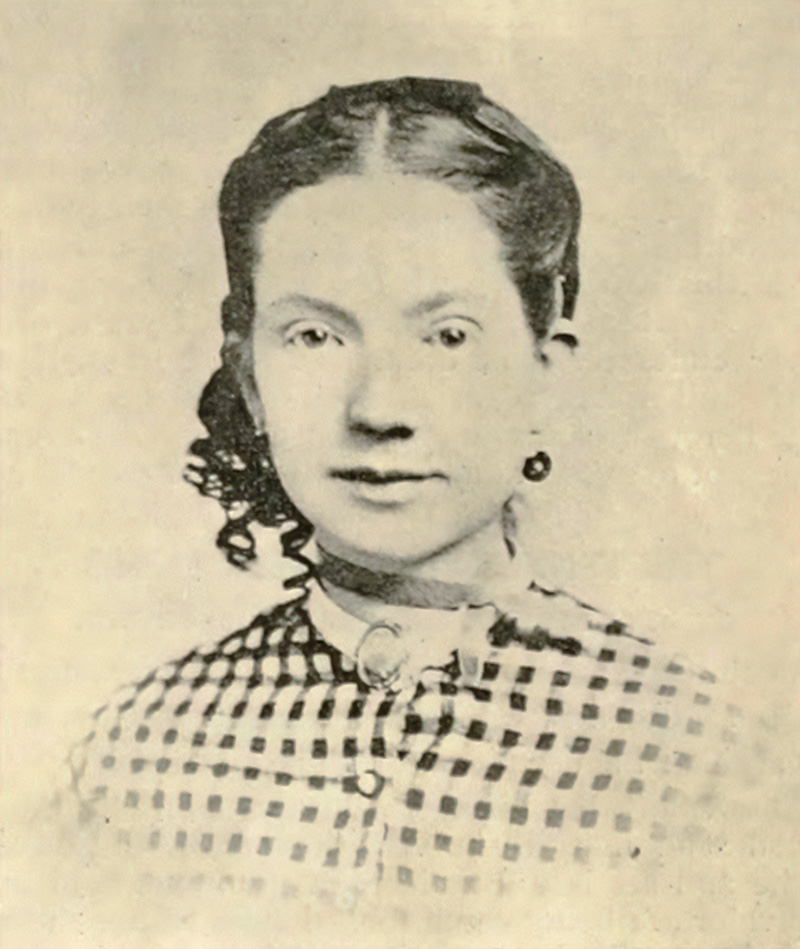
(HistoryNet Archive)
The ferocity of battle typically leads one to perform the sudden. Throughout the Battle of Thompson’s Station, Tenn., on March 5, 1863, teenager Alice Thompson—a progeny of the settlement’s namesake—made a split-second choice that helped change the course of an eventual Accomplice victory.
Life had begun as traditional that late-winter day, however Alice quickly discovered herself caught within the midst of a determined fray. Serving as Accomplice physicians, Alice’s father in addition to her beau remained close to the entrance. She in the meantime fled her dwelling, in search of safety for the remainder of her household and discovering refuge within the cellar of a neighbor, Accomplice Lieutenant Thomas Banks. From the basement home windows, she was in a position to catch glimpses of the battle.
Because the combating intensified, Alice confronted a decisive second. Having watched repeated Union advances and Accomplice counterattacks, she grew to become distressed watching a Southern flag-bearer fall to the bottom. Forsaking her security, Alice scrambled from the hiding place and made her solution to the fallen soldier, grabbing the regimental colours—these of the third Arkansas Cavalry—he had been carrying. Proudly holding the colours excessive, she drew the eye of Accomplice troops, who have been impressed by the recklessly brave endeavor and rallied to push the Yankees again. Even with shells exploding round her, Alice reportedly by no means flinched because the Confederates superior. Retreating Union troops have been amongst those that admired her unimaginable bravery.
Lastly, others involved for Alice’s well-being pulled her again to the cellar. Her heroics didn’t finish there, nonetheless. With Banks’ home serving as a hospital, she helped have a tendency the wounded.
Alice Thompson died in 1869, solely 23, however her gallantry at Thompson’s Station secured her place in Civil Warfare historical past and reminiscence. —Heidi Weber
Julia Wilbur
(1815–1895)
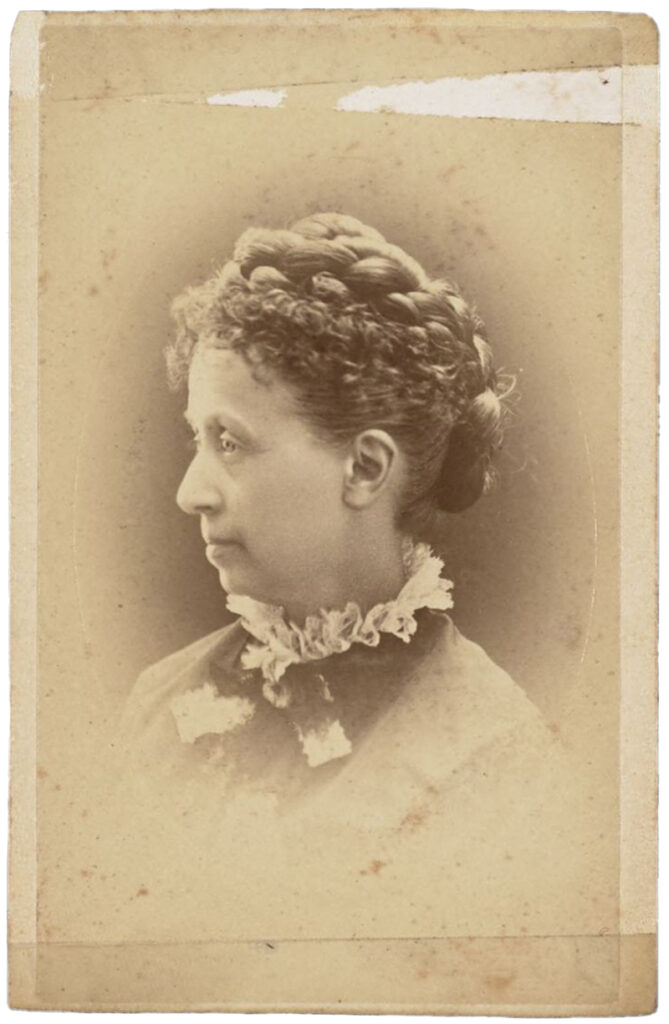
(Haverford Faculty Quaker & Particular Collections)
Julia Wilbur’s life simply may have slipped into historic anonymity. After years of a moderately typical rural lifetime of educating college and tending to the wants and needs of assorted members of a giant and prolonged household, the spirited and socially conscious Wilbur discovered herself caught up within the evangelical spirit burning by western New York. Residing within the environs of Rochester introduced her into contact with outstanding abolitionists and social reformers who, within the many years previous to the Civil Warfare, advocated numerous types of social and political change. Changing into a member of the Rochester Women’ Anti-Slavery Society (RLASS) in 1852 in all probability rescued Wilbur from the lifetime of an unassuming spinster and remodeled her, at age 47, into an lively social activist simply because the nation was slipping into secession and warfare.
Decided to do greater than darn socks and ship meals packages to the native boys within the Union Military, Wilbur traveled to Washington, D.C., as a consultant of the RLASS. At first, she was armed with nothing quite a lot of normal letters of introduction and a coronary heart stuffed with grit and compassion. After arriving on October 28, 1862, she was despatched to Alexandria, Va., to do what she may to supply support and luxury to the hundreds of contrabands streaming into the Union-held metropolis.
Nothing had ready her for the sights, sounds, and, sure, smells she encountered. An entry in her diary described circumstances she discovered upon her arrival: “Went to previous College Home. 150 C’s [contrabands] there. A big home for sick close by. We went there, folks in filth & rags—a lifeless little one lay wrapped in piece of ticking—in one other room, a lifeless little one behind the door. Oh what sights! What Distress! No physician—no medicines—solely rations & Shelter.”
Alongside along with her better-known pal—former slave and abolitionist Harriet Jacobs—Wilbur typically encountered cussed navy bureaucracies, unfriendly native residents, and numerous disorganized benevolent associations throughout her unrelenting struggle towards starvation, illness, and demise. For the rest of the warfare, Wilbur set about to vary the dreadful circumstances she discovered there.
Wilbur lived in Washington after the warfare and labored as a clerk within the Patent Workplace from 1869 to 1895, a harbinger of the hundreds of ladies who would observe her into authorities employment. She remained energetic in social causes similar to voting rights for girls. She died on June 6, 1895, and is buried within the household plot in Avon, N.Y. —Gordon Berg
Contributors:
Dr. Bruce Allardice, writer of the “Unfastened Lips” characteristic article in ACW’s Spring 2023 concern, teaches historical past at Illinois’ South Suburban Faculty. He has co-authored a number of books and articles on the Civil Warfare and on the historical past of baseball.
Dr. Terry Beckenbaugh is an affiliate professor of historical past within the Division of Joint Warfare at U.S. Air Pressure Command and Workers Faculty, Maxwell Air Pressure Base, Montgomery, Ala. He’s engaged on a guide on the
1862 White River Marketing campaign in Arkansas.
Gordon Berg, who writes from Gaithersburg, Md., is a longtime contributor to America’s Civil Warfare, Civil Warfare Occasions, and different HistoryNet publications.
William Joseph Bozic Jr., a retired Texas highschool social research trainer, works for the Nationwide Park Service in San Antonio. He’s married with 4 kids.
Fran Cohen, a contract writer specializing in historical past , writes from Little Rock, Ark.
Stephen Davis, who makes a speciality of Southern Civil Warfare historical past, writes from Cumming, Ga.
John Gordon is a contract writer based mostly in Wetumpka, Ala.
Dr. Charles Grear, professor of historical past at Central Texas Faculty, writes extensively on Texas and the Civil Warfare. He’s the writer of Why Texans Fought within the Civil Warfare.
Richard H. Holloway, a member of ACW’s editorial advisory board, is a historian who hails from Louisiana.
Gregg Phillipson is a former member of the Texas Holocaust Fee, well-known for loaning his massive assortment of Jewish warfare memorabilia to museums throughout Texas. A resident of Austin, he additionally continuously delivers displays about Jewish navy historical past.
Dr. Heidi Weber is an affiliate professor within the SUNY–Orange Division of World Research, with specialties in U.S. historical past, the Civil Warfare, and Reconstruction.
Edward Windsor, a retired historian and newspaperman, writes from Corinth, Miss.

